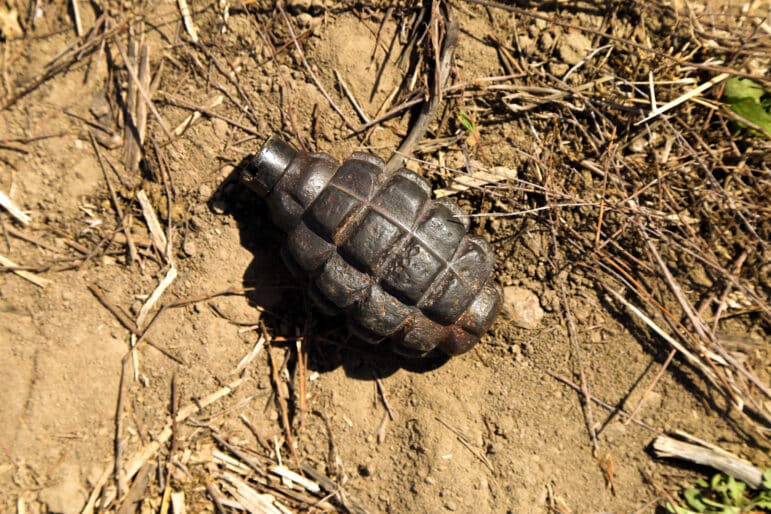
CEE and Global Partners Host Webinar on the Ecological Costs of War
“The environment knows no borders. Environmental costs are very much interconnected with the humanitarian situation. It’s a cycle that becomes quite difficult to break,” reflected Elaine Donderer during a webinar on the ecological costs of war on May 14, 2025. The Center for Earth Ethics hosted the online forum in partnership with the Conflict and Environment Observatory (CEOBS), the Arava Institute for Environmental Studies and the Roman Catholic Diocese of San Diego.
Donderer, a project manager at the Arava Institute, was joined by Doug Weir, director of CEOBS, Dr. Christina Bagaglio Slentz, associate director of Creation Care Office for Life, Peace and Justice for the Diocese of San Diego, and Dr. Olena Melnyk, research associate at Bern University of Applied Sciences. Comments from CEE Executive Director Karenna Gore bookended the event, and Director of Strategic Initiatives Samira Siddique moderated the conversation.
The event covered the environmental impacts of conflict from academic, personal and moral perspectives. Panelists discussed global questions surrounding ecocide, earth ethics and militarism, as well as regional examples of destruction and reconstruction.
The ecological costs of war have recently gained media attention, particularly regarding the conflict in Ukraine, which lost roughly 600 square miles of forest in the first two years of its war with Russia. Meanwhile, in Gaza, approximately 100,000 cubic meters of sewage and wastewater are released every day onto the land and into the Mediterranean Sea due to the forced shutdown of treatment facilities caused by Israel’s blockade, airstrikes and restrictions on fuel and electricity. These conflicts also have global climate implications. In Ukraine alone, after three years of war, emissions reached 230 metric tons of carbon dioxide equivalent (MtCO2e), or “the equivalent of the annual emissions of Austria, Hungary, Czech Republic and Slovakia combined.”
Breaking Down Silos
While discussion of these environmental costs has increased, the overlap with humanitarian concerns is often overlooked. Weir explained that the humanitarian sector is structured in artificial silos that do not reflect the reality on the ground. “You have a cluster on shelter, you have a cluster on protection, you have a cluster on water, and on sanitation. They don’t really approach the environment as a cross-cutting issue across all of these things.” He highlighted the need for solutions that acknowledge the intrinsic linkages between the ecological and the human.
The Arava Institute’s June 2024 report on the environmental and humanitarian impacts of Israel’s ongoing assault on Gaza emphasized this point, especially regarding the interconnectedness of water pollution and energy access. Ultimately, Donderer explained, “if we don’t address these environmental issues, it reduces our capacity to deal with other hazards or disasters like drought or food security.”
The work of our time now is to see that ecological and humanitarian crises are so intertwined.
Karenna Gore
Seeing the Unseen, Making Connections
Siddique further examined these tensions, raising the question of how to balance ecosystem health with human rights. She drew on her research on the Rohingya refugee crisis, which brought an influx of one million refugees to Bangladesh and led to mass deforestation. In response, Dr. Bagaglio Slentz pointed to Pope Francis’s 2015 encyclical, Laudato Si’, and Saint Francis of Assisi in the Catholic tradition, who recognized that “all of the created world” is interconnected, and that humans have a “sibling relationship” with other life, including the environment.
Melnyk underscored these interconnections by sharing her personal story of fleeing Ukraine to Switzerland. She explained how she shifted her research from broader climate policy and energy security work to soil sampling efforts that assessed the impact of shelling on the health of the land and the viability of food production. Melnyk’s lived experience makes her particularly attuned to the overlapping environmental and humanitarian dimensions of conflict, and her responses and solutions emphasized this. She explained how the most effective initiatives blend international collaboration and support with the development of local capacity (for example, training former soldiers in soil mapping).
Donderer reiterated the importance of engaging with local communities, who “are stewards of their environment and often have the best knowledge and immediately notice when there might be a problem.” This involvement is critical, she said, because “trust is such a scarce resource in a war setting.”
The Role of the U.S.
The role of U.S. militarism loomed large in the discussion. Bagaglio Slentz provided unique insight into military perspectives on the environment from her time in the U.S. Navy. She noted the “ground level truth of war” is distant from most Americans’ lived experiences; despite being involved in numerous global conflicts, the U.S. hasn’t fought a war on its soil since the Civil War. This distance from conflict leaves many Americans unaware of—or uninterested in—its humanitarian and environmental horrors, allowing the environment to become “collateral damage,” sacrificed for the predominant ethos of “might for right.”
Additionally, Bagaglio Slentz discussed the irony in the U.S. military’s contributions to the very climate crisis it sees as a “threat multiplier.” The US military frames the climate crisis primarily as an “increasing national security concern,” especially with regard to conflicts fueled by migration and displacement. This framing only leads to more military spending and fossil fuel emissions—a vicious cycle in which “the United States is contributing to the very causal factor that is raising their alarm.” Instead, she advocated for a just transition and for international cooperation in supporting systems that “help people to be resilient where they live.” Weir echoed this point, stating that “this focus on climate change as a security risk leads to policy maladaptation.” He suggested that spending on a “hard security approach” doesn’t actually benefit the resilience of communities, particularly those in already fragile contexts.
We need to move away from anthropocentrism, and move more towards conceptualizing ourselves as part of the environment. I don't think it's a new ability we need to learn. Rather, I think it's something going back to who we are as humans in our natural environment.
Elaine Donderer
In her concluding remarks, Gore noted that “the work of our time now is to see that ecological and humanitarian crises are so intertwined.” As panelists considered the best responses to this theme, one throughline was that, as Donderer put it, “we need to move away from anthropocentrism, and move more towards conceptualizing ourselves as part of the environment. I don’t think it’s a new ability we need to learn. Rather, I think it’s something going back to who we are as humans in our natural environment.”
This cross-cutting message about the truth-force of ecocentrism echoes CEE’s core values. As the panelists highlighted, an ecocentric perspective is not just a moral imperative to protect the environment—it’s necessary to alleviate humanitarian suffering and environmental destruction.

